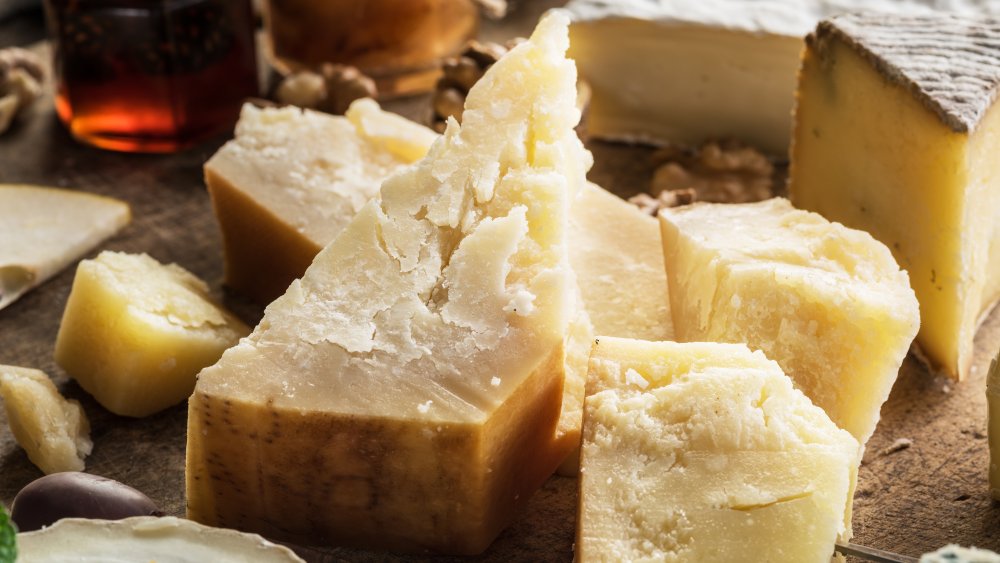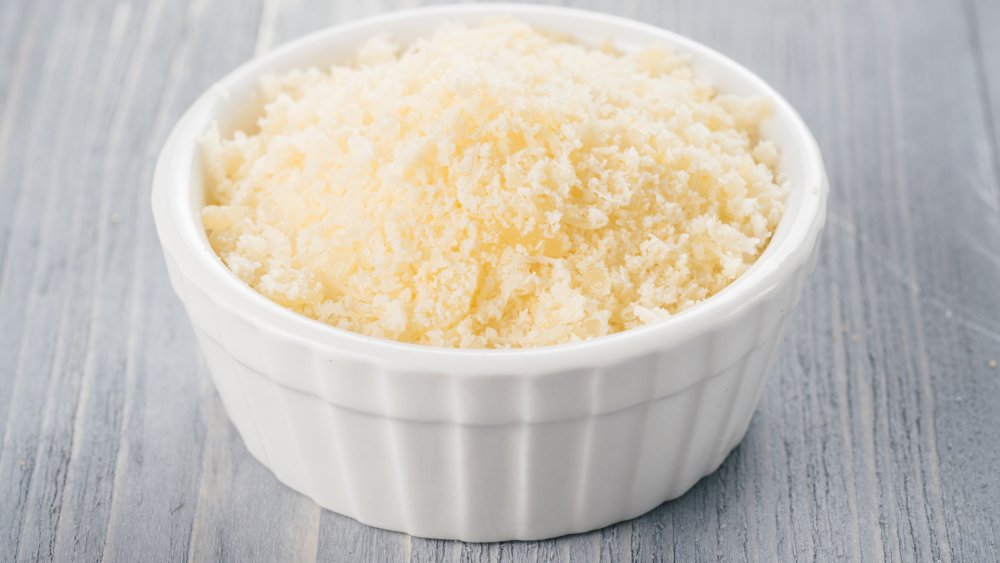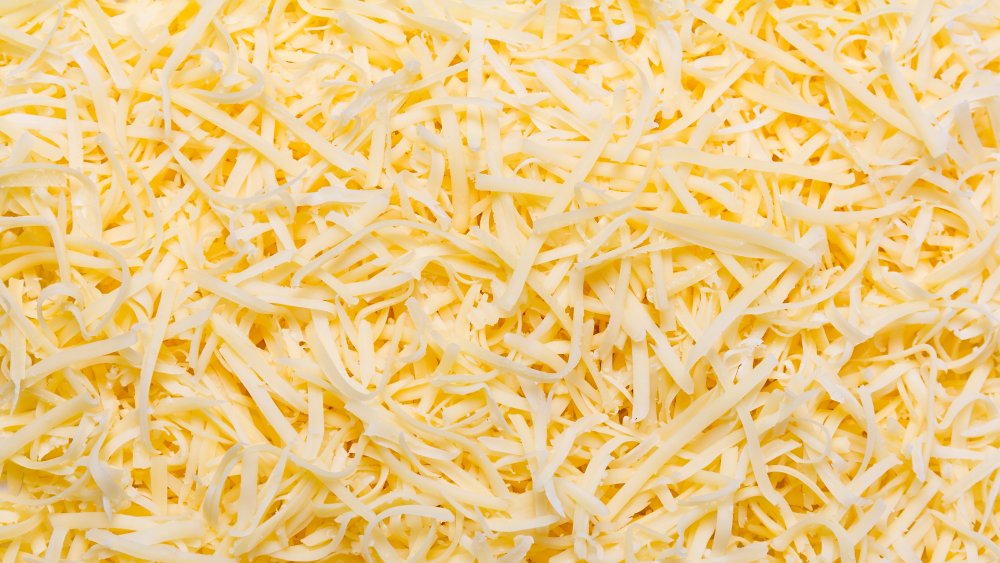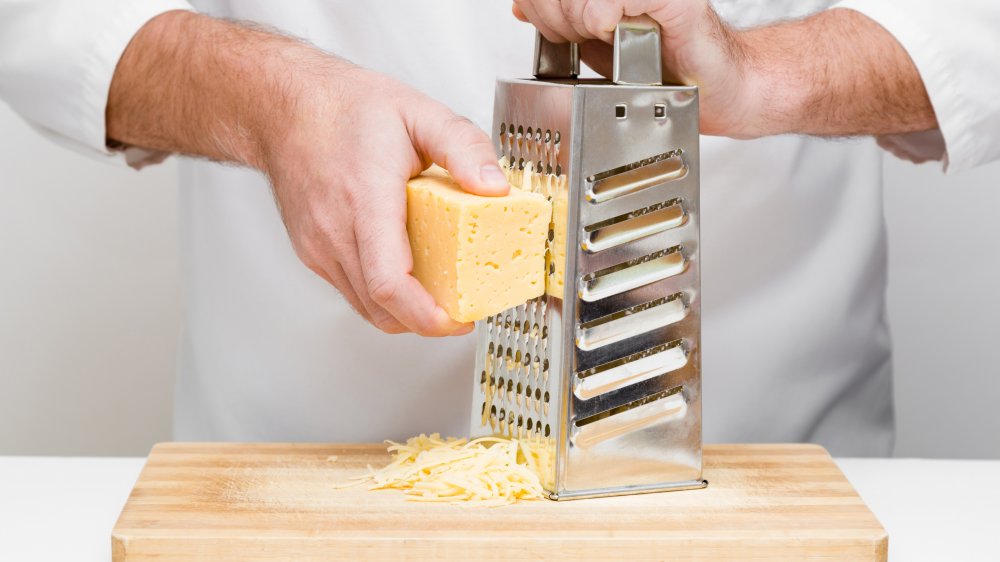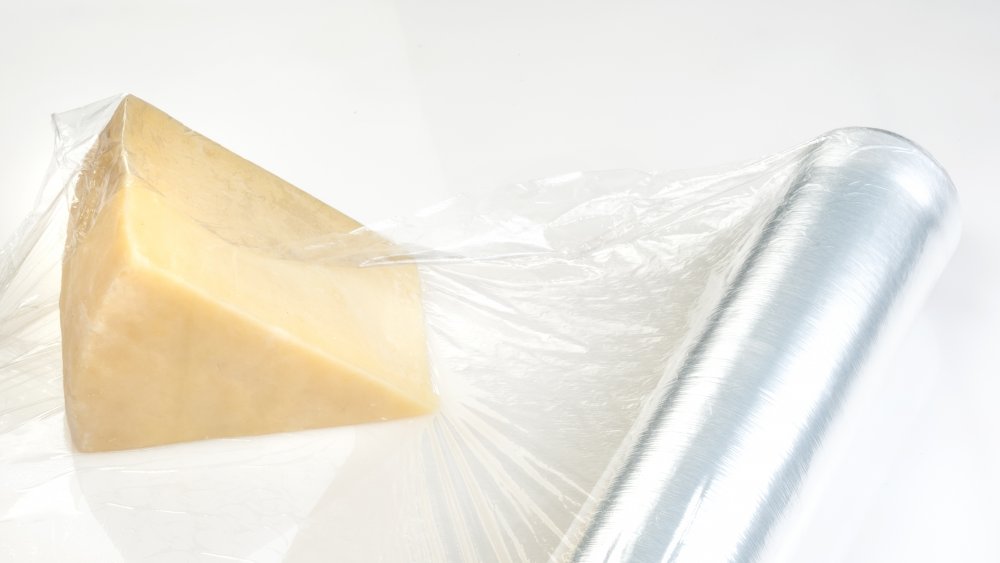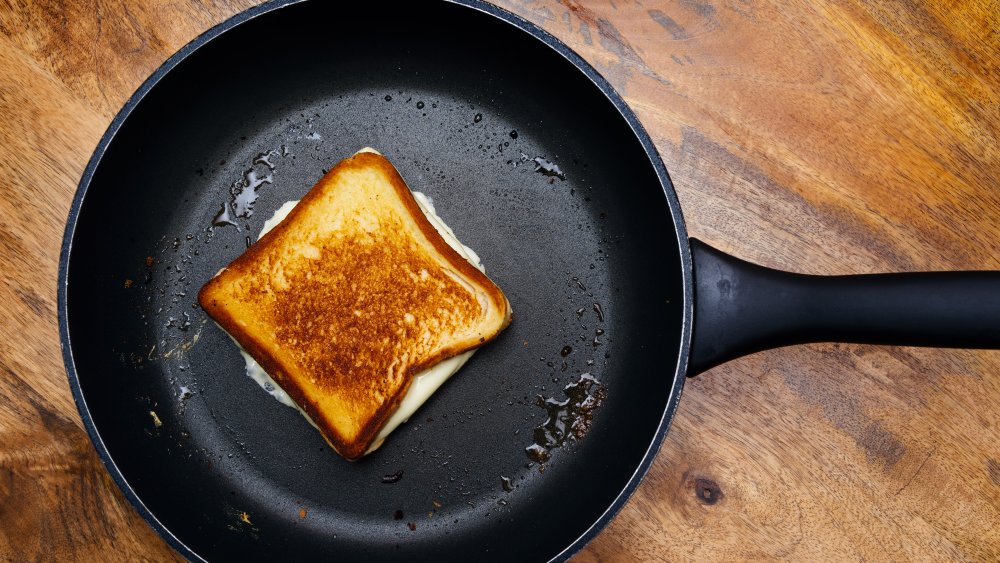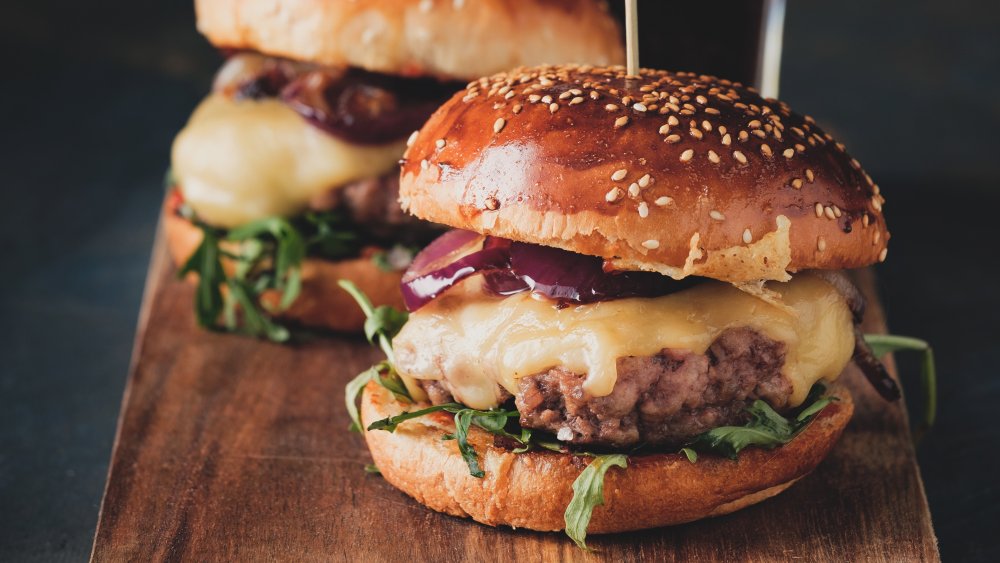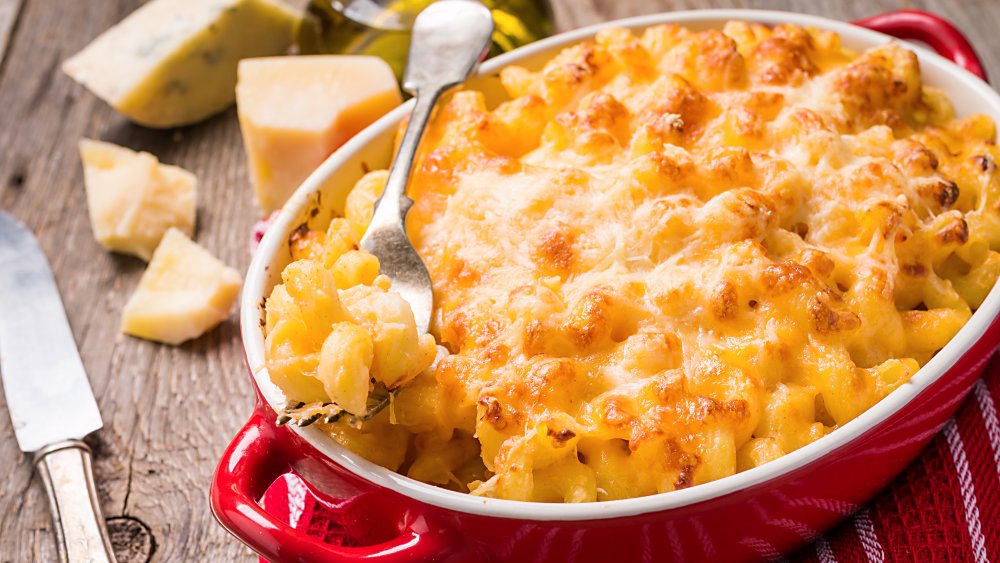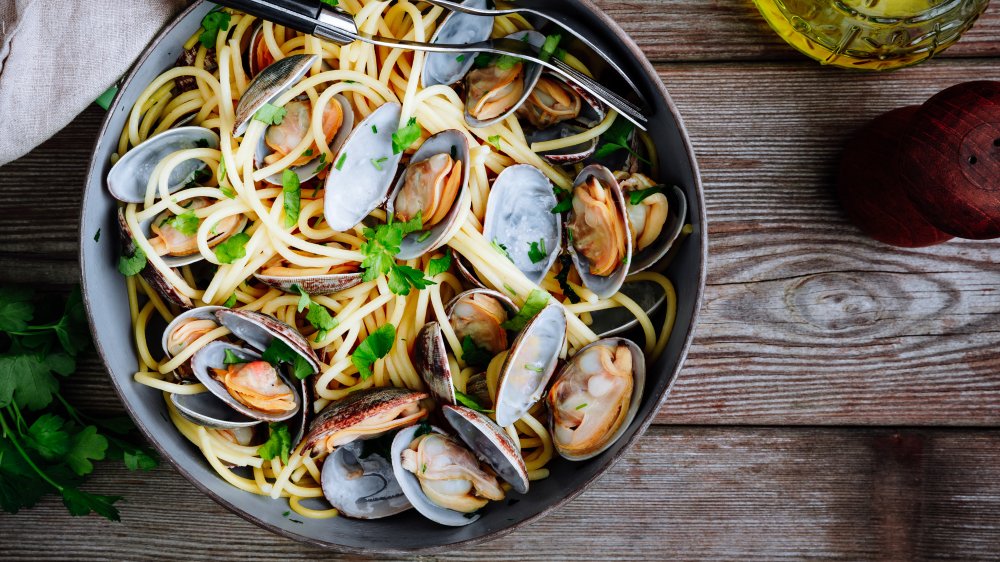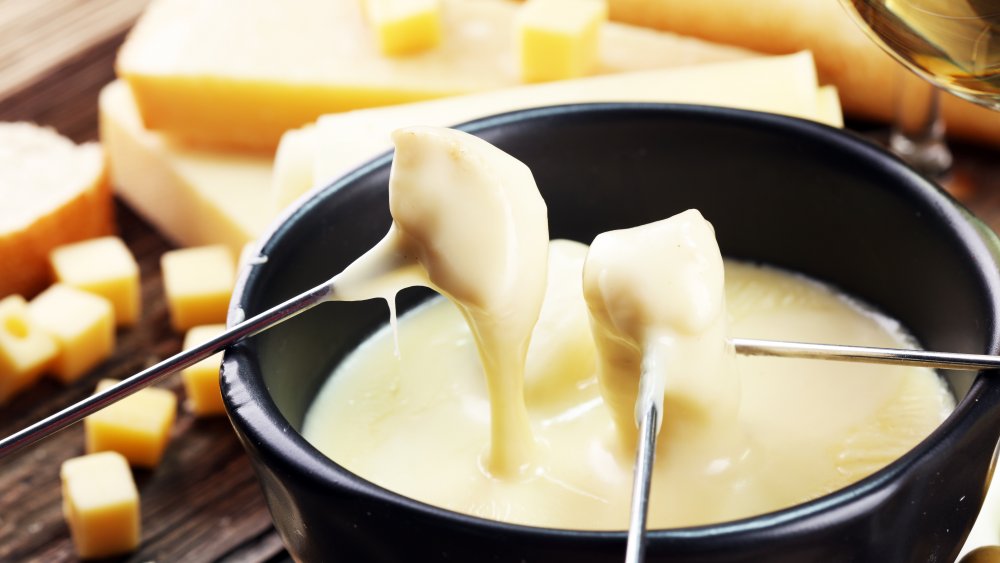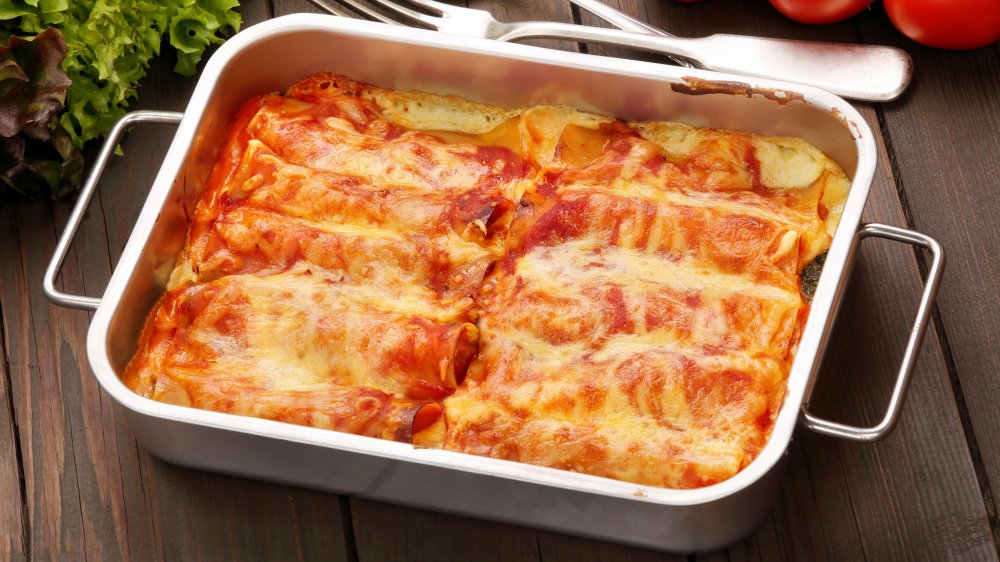Mistakes Everyone Makes When They Cook With Cheese
When cooking or meal prepping with cheese in the past, you may have learned that "too much of a good thing" is not just something people say. A delicate salad can easily be overwhelmed by a too-strong blue cheese and a pizza can quickly become unappetizing with the addition of too much stringy, liquified mozzarella. Cheese is often the most bold and assertive flavor in a dish, and it's hard to know when enough is actually too much. Still, most home cooks' cheese mistakes are actually related to the preparation stage.
Cheese is essentially a mix of milk proteins, bacteria, and salt, and it can be finicky to store, grate, mix, melt, and serve. Moreover, American grocery shoppers have to be smart consumers in the cheese aisle. Many types of cheese sold in grocery stores in the United States are not, in fact, all cheese. And even if they are genuinely cheese and not "cheese product," they may not be what's printed on the label. Don't let this scare you away from making that three-cheese lasagna, though. Cheese is your friend, you just have to treat it right.
Buying pre-grated parmesan cheese
For many Americans, a plastic tub of grated cheese is the only parmesan cheese they've ever known. But next time you're at the grocery store, think twice before reaching for that familiar plastic container. Most parmesan cheese sold in America is not even real parmesan, according to Forbes, because genuine Parmigiano-Reggiano is really expensive (a single wheel can cost more than $1,000) and American food regulations are, well, weak. That's a subject for another day, but in short, don't trust a wedge of parmesan cheese sold at most grocery stores in the United States — and definitely do not trust the pre-shredded stuff.
Bloomberg News tested store-bought, pre-grated parmesan cheese in an independent lab and found that some brands contained higher percentages of cellulose, a cheap filler also known as wood pulp, than is deemed safe. In addition to the horrifying thought of sprinkling an excess of 2 to 4 percent of "powdered cellulose" over your food, consider that cheese, once grated, will dry out. Even though parmesan is a dry cheese, pre-grated parmesan is dryer and lacking in flavor relative to freshly grated.
Buying pre-shredded cheese
Don't fear the grater, folks. Pre-shredded cheese is convenient, of course, but what you get for that convenience you sacrifice in taste, oooey-gooey meltiness, and savings. Grated cheese contains preservatives like potato starch, powdered cellulose (aka wood pulp), and natamycin. Potato starch and cellulose work together to prevent clumping, and natamycin is an anti-mold agent.
Freshly grated cheese lacks these preservatives, so it tends to taste better, and melt more smoothly. You also get more bang for your buck. As Taste of Home explained, an 8-ounce block of cheese will yield more volume of grated cheese than an 8-ounce bag of pre-shredded cheese. When you grate your own cheese, you also have more choices available to you. If you want grated cheddar cheese, at most supermarkets, there might be two or three varieties at most. If you're grating your own cheddar cheese, the world is your cheesy, delicious oyster. Grate away, cheeseheads!
Grating cheese that is too warm
At this point, you're probably thinking that the box grater is your new BFF, but before you get too comfortable, just remember the cheese you're using — specifically the temperature of that cheese — matters too. Although you should serve cheese at room temperature, it's best to shred cheese when it's cold. This mean you should begin grating immediately after taking the cheese from the fridge. If you try to shred cheese that is too warm, it will become a mushy mess.
This rule also applies to hard cheeses, like parmesan. Even if it seems solid at room temperature, put it back in the refrigerator for a few minutes. Soft and/or fresh cheese may not need to be grated at all, but you should still wait to crumble it until its sufficiently cold.
You can freeze cheese and then grate it, but there are some definite drawbacks to letting cheese anywhere near your freezer. There are types of cheese you should never be frozen, such as fresh cheese and cheese with holes or air pockets. But even with cheese that can be frozen, bear in mind that freezing can affect flavor and dry out cheese. As such, you might find yourself with a crumbling pile if you grate cheese straight from the freezer.
Storing cheese uncovered or covered in plastic wrap
Raise your hand if you have ever stored a hunk of cheese in the fridge in a poorly wrapped ball of plastic wrap. Is your hand up? It's okay; we've all done it. You can learn, grow, and be a better friend to cheese — starting now. Cheese comes into your home with its moisture content carefully balanced and you're going to want to replicate its ideal storage conditions as much as possible. That means covering it completely and not leaving it exposed in the fridge to dry out.
Exposed cheese in the refrigerator will also start to take on the taste of food it's being stored next to, so unless you want your cheese to take like leftover pad thai and salad greens, you should probably cover it up. But please don't cover it with plastic wrap. Cheese is a living, breathing thing, which means completely closing it off from air will suffocate its flavor. Moreover, plastic wrap's artificial, plasticky taste will start to absorb into cheese after a day or two.
The best way to store cheese is in cheese paper, but if you don't have cheese paper handy, The Splendid Table recommends wrapping your cheese in wax paper or even aluminum foil.
Rushing your grilled cheese
Some people say you should put mayonnaise on the outside of a grilled cheese while others say you should put butter on the outside of a grilled cheese. Regardless of your method, don't forget to also pay attention to what goes inside the sandwich: the cheese.
The ideal grilled cheese sandwich is crispy on the outside and melted on the inside, and while it seems like that shouldn't be too hard, if you've ever had a grilled cheese that was ultimately just a slice of unmelted cheese between two slices of burnt bread, you know that it is, in fact, entirely possible to screw up something that seems so simple.
First, remember that good things, like a delicious grilled cheese sandwich, come to those who wait. Then, spread your spread of choice — like butter or mayo — all the way to the edge of the bread. Be sure to use a bread with a tight crumb so cheese doesn't get all over your pan. Next, arguably most importantly step: Use a cheese that melts well. While cheese aficionados may scoff at American cheese, it really is the best for this sandwich. Lastly, grill your grilled cheese low and slow. High heat is not your friend here.
Using cheese that doesn't melt in a cheeseburger
Look, hipster brewpubs, it's okay to stray from the classic cheeseburger, but there's no point in putting cheese on a burger if it isn't going to melt, right? Sorry to crush your Greek cheeseburger dreams, but feta is incapable of melting. Mozzarella and provolone? Both have a high water content and will turn into a stringy mess on a burger. Halloumi? It does not melt at all, and is meant to be put directly on a grill.
If you're going to have a cheeseburger, stick with one of the classics, like American Kraft singles. Kraft cannot technically call this product "cheese" per FDA regulations, but it's America's favorite "pasteurized cheese product" and what other cheese melts over the top of a burger so perfectly? If you insist on eating real cheese, though, cheddar, Swiss, or blue cheese all taste really nice on top of a burger.
Only using one kind of cheese in macaroni and cheese
If you are making mac and cheese and not immediately reaching for the kind that comes from a box, start by giving yourself a pat on the back. There is an easy out in every supermarket, but you are one of the brave souls opting to go beyond Kraft Easy Mac.
To make a proper mac and cheese, you'll start out by making a béchamel sauce — one of the "five mother sauces" of classical cuisine — and then add in some cheese, which turns your béchamel into a mornay sauce. If you only opt to add in one type of cheese, though, you are missing out the on depth and flavor that a blend of cheeses can provide.
Try mixing a mild cheese that melts very well, such as fontina or Gruyere, with a cheese that has a sharp and more vivid taste like a parmesan or Roquefort. And please, please, please: Don't use Velveeta. While it may work in your queso dip, keep that cheese product away from all forms of pasta.
Not using low-moisture mozzarella to make pizza
Have you ever had really fresh mozzarella? It's creamy, delicious, and very, very moist. The best mozzarella is made from buffalo milk, and this type of mozzarella is ideal for the slightly soggy in the middle, thin-crust Neapolitan-style Margherita pizza as that calls for generous splotches of melted mozzarella on top. It is less than ideal, however, for an American-style slice due to its moisture content. Low-moisture mozzarella, on the other hand, will melt and stretch but remain dry enough for a pizza crust to stay nice and crispy.
Additionally, low-moisture mozzarella has a much longer shelf-life than fresh mozzarella. It doesn't taste great at room temperature, but it is the type of cheese that really comes alive under heat. If you want to snack on mozzarella that isn't melted, get yourself some fresh mozzarella di bufala. Avoid sticking it in the refrigerator and simply slice up the fresh cheese and serve at room temperature.
Mixing seafood and cheese
This is an Italian tradition that has more or less become accepted as a rule around the world: Thou shalt not mix seafood and cheese! One Italian chef in London was so offended that a customer requested parmesan to sprinkle on his crab ravioli that he denied the request. In response to the customer's bad review on TripAdvisor, the irate chef replied, "Try parmesan on cow dung, it should taste fine for you" (via Metro).
Where does this rule come from? You could argue that it is because most seafood has a delicate flavor palate, and a bold, assertive cheese could easily overpower that. In Italy, this taboo might be a product of geography. Italy's major cheesemaking regions are generally land-locked and given their distance from the sea, their historic cuisines developed without an emphasis on seafood. Italy is also a largely Catholic country and, for centuries, Catholics were forbidden from consuming meat and dairy on Fridays.
Even if you follow this rule, you don't even have to look outside Italian cuisine to find an exception or two. Anchovy pizza! Clams Casino pizza! Once you look beyond Italy, the exceptions multiply. In the south of France, you can order, mussels with blue cheese (moules au Roquefort). You can get a tuna melt at any deli in New York City. Some rules are made to be broken — sometimes. Just proceed with caution.
Letting cheese fondue get too hot
Is there anything as kitschy fun as fondue? Some people might say that fondue is making a comeback, but, really, has sharing a melted pot of cheese ever actually gone out of style? If you have a fondue set sitting in your basement gathering dust because the idea of being the hostest with the mostest cheese is intimidating, it's time to think again.
You should know that getting the perfect consistency of fondue is more art than science — and you can absolutely adjust as you go. Of course, the absolute worst feeling is watching your nearly perfect sauce break or split, so remember that, just like with your grilled cheese or your mornay sauce, you need to go low and slow. Heat up some white wine, toss your grated cheese of choice with corn starch, and slowly add the cheese to the not-too-hot wine. Let the cheese melt before adding more, but don't let the cheese get above its melting point.
If the liquid comes to a boil, the protein in the cheese will coagulate and pull out the fat, leaving you with a lumping, unappealing sauce. If you find the sauce is getting too hot, just take take it off the stove for a minute or two. That's it! Temperature is the only tricky thing about fondue or, really, any other cheese sauce.
Not bringing cheese to room temperature before melting
In addition to being delicious, cheese is, of course, alive. As such, it makes sense to treat it with care. Plus, its varying moisture content and protein structure is sensitive to temperature changes. If you plan to cook and melt cheese that has been refrigerated, one way to prevent a sudden temperature change is to bring your cheese to room temperature ahead of time. Just take the cheese that you plan to use and put it on the counter about 30 minutes in advance. This will give your cheese a head start toward reaching its melting point.
Remember: Try to always serve cheese at room temperature. If cheese is too cold, you won't get the full impact of its flavor. You can safely leave cheese out of the fridge for a maximum of four hours. Hard cheeses can be left out longer, and soft cheeses such as brie and ricotta should be left at room temperature for as little time as needed.
